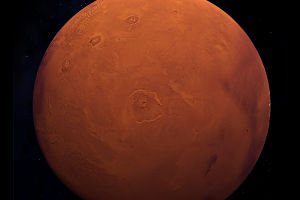According to a recent report by the US Space Network, around the 26th, Jupiter, the largest planet in the solar system, will have the "closest contact" with the Earth in 59 years.
The gas giant will then be on the opposite side of the sun as seen from Earth, in what's known as a Jupiter opposition.
Astrophysicist Adam Kobelski of NASA's Marshall Space Flight Center explained that Jupiter oppositions are common, occurring every 13 months. But oppositions rarely occur at Jupiter's closest point to Earth.
This year, though, Jupiter will be closest to Earth on the 25th and in opposition on the 26th. It will then be unusually bright and large in the sky, providing a unique opportunity to observe its features.
NASA's statement said that when Jupiter was in "close contact" with the Earth, the closest distance to the Earth was 590 million kilometers and the farthest was 960 million kilometers.
The last time Jupiter came this close to Earth was in October 1963, and that was the last time skywatchers were able to see Jupiter in this large and bright condition in the sky.
"The 'close encounter' between Jupiter and Earth means we can see some of Jupiter's most fascinating features from Earth," Kobelski said. "With good binoculars, at least three or four of the Galilean moons can be seen. "
Galilean is the largest of the 79 known moons of Jupiter. These moons were named Io, Europa, Ganymede, and Callisto.
The icy moon Europa hides a vast ocean, making it a prime target for studying life elsewhere in the solar system.
The satellite will be probed by the European Space Agency's Europa Clipper, with a launch planned for no earlier than 2024.
In addition, the European Space Agency will launch the "Jupiter Ice Moon" spacecraft to explore the three Galileo satellites, and the launch time is tentatively scheduled for April 2023.
Jupiter is the largest and fastest rotating planet among the eight planets in the solar system and the fifth farthest planet from the sun.
Its mass is one-thousandth that of the sun and 2.5 times the mass of the other seven planets in the solar system combined.
Since Jupiter, Saturn, Uranus, and Neptune are all gas planets, they are collectively called Jupiter-like planets (Jupiter and Saturn are collectively called gas planets).
Jupiter is a gas giant planet. What humans see are usually the tops of the clouds in the atmosphere, at a pressure slightly above 1 atmosphere.
Jupiter presents an oblate spheroid (with a slight but visible bulge near the equator) due to its fast rotation (one rotation is 10 hours), and it is known as a "flexible fat man".
The outer atmosphere is clearly divided into multiple zones according to latitude, and the edges where the zones meet are prone to turbulence and storms, the most notable example being the Great Red Spot.
In February 2018, NASA released a set of images of Jupiter's south pole captured by the Juno satellite. The eye-catching blue swirls twist and change in gorgeous patterns, creating an amazing spectacle.
In 2018, astronomers discovered 12 new moons of Jupiter, bringing the number of known moons of the gas giant to 79.
Scientists photographed them while observing more distant Kuiper Belt objects. The two newly added satellites are named "S/2016 J1" and "S/2017 J1", which are 21 million kilometers and 24 million kilometers away from Jupiter respectively.


